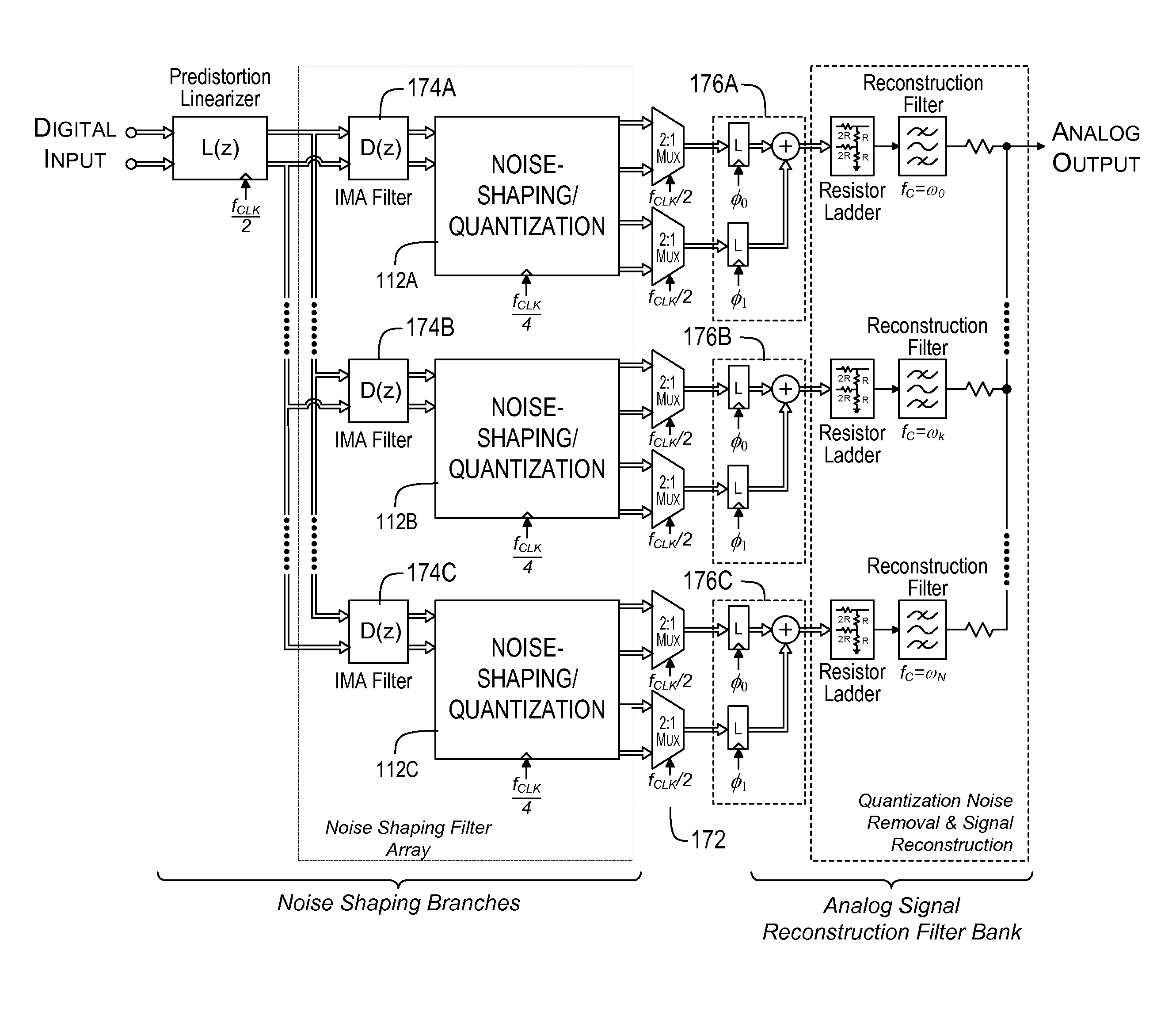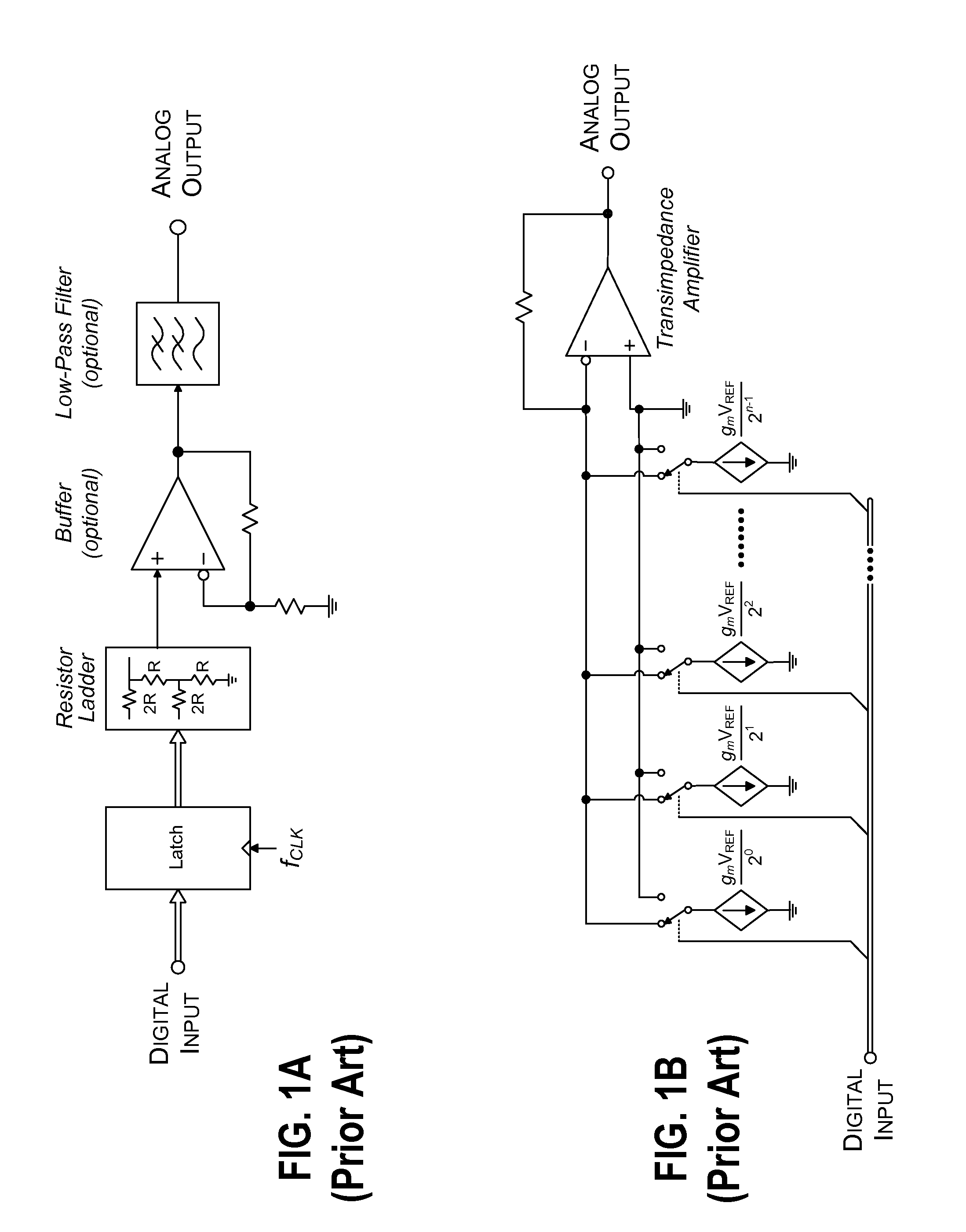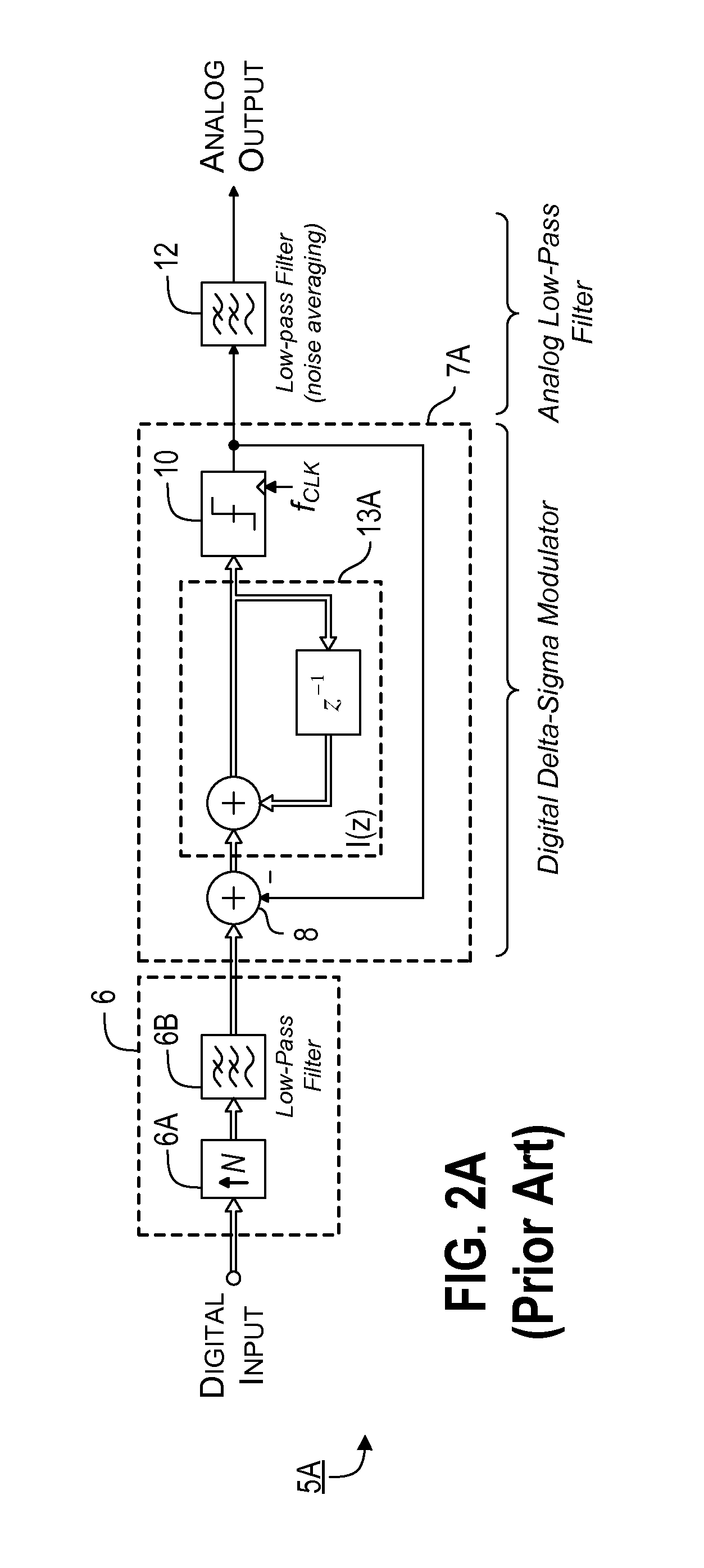Conversion of a Discrete Time Quantized Signal into a Continuous Time, Continuously Variable Signal
a discrete time, continuous time technology, applied in the direction of digital-analog convertors, transmission systems, instruments, etc., can solve the problems of inability to achieve continuous time continuous variable signals, etc., to achieve the effect of overcompensating resolution limitations
- Summary
- Abstract
- Description
- Claims
- Application Information
AI Technical Summary
Benefits of technology
Problems solved by technology
Method used
Image
Examples
Embodiment Construction
)
[0034]A preferred converter according to the present invention uses a technique that sometimes is referred to herein as Multi-Channel Bandpass Oversampling (MBO). In a somewhat comparable manner to conventional, oversampling digital-to-analog converters, the MBO converter employs a form of “oversampling” (as that term is broadly used herein) in conjunction with noise shaping to mitigate the resolution-degrading effects of quantization error, sampling jitter, and thermal noise. An MBO converter according to the preferred embodiments of the present invention incorporates one or more of the following technological innovations to improve instantaneous bandwidth and resolution: (1) multiple oversampling converters (e.g., each processing a different frequency band), are operated in parallel to overcome the bandwidth limitations of conventional oversampling converters; (2) multirate (i.e., polyphase) delta-sigma modulators (preferably second-order or higher) are used in place of conventio...
PUM
 Login to View More
Login to View More Abstract
Description
Claims
Application Information
 Login to View More
Login to View More - R&D
- Intellectual Property
- Life Sciences
- Materials
- Tech Scout
- Unparalleled Data Quality
- Higher Quality Content
- 60% Fewer Hallucinations
Browse by: Latest US Patents, China's latest patents, Technical Efficacy Thesaurus, Application Domain, Technology Topic, Popular Technical Reports.
© 2025 PatSnap. All rights reserved.Legal|Privacy policy|Modern Slavery Act Transparency Statement|Sitemap|About US| Contact US: help@patsnap.com



